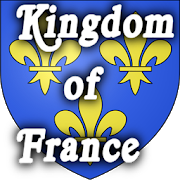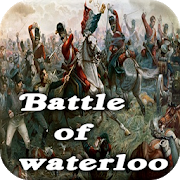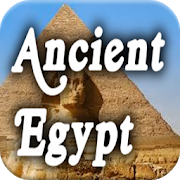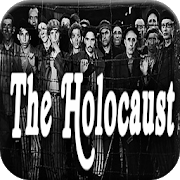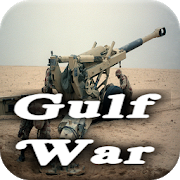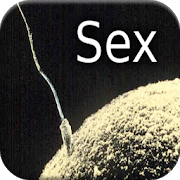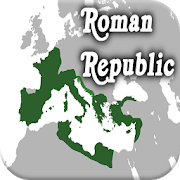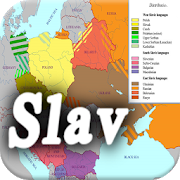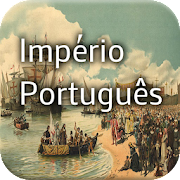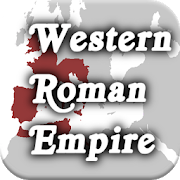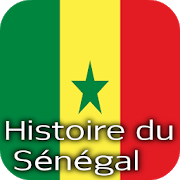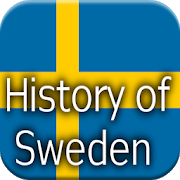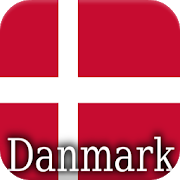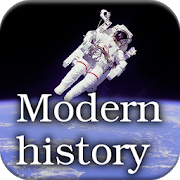HistoryofTheWorld Apps
History of Ancient Egypt 4.1
Ancient Egypt was a civilization of ancient North Africa,concentrated along the lower reaches of the Nile River, situated inthe place that is now the country Egypt. Ancient Egyptiancivilization followed prehistoric Egypt and coalesced around 3100BC (according to conventional Egyptian chronology) with thepolitical unification of Upper and Lower Egypt under Menes (oftenidentified with Narmer). The history of ancient Egypt occurred as aseries of stable kingdoms, separated by periods of relativeinstability known as Intermediate Periods: the Old Kingdom of theEarly Bronze Age, the Middle Kingdom of the Middle Bronze Age andthe New Kingdom of the Late Bronze Age. Egypt reached the pinnacleof its power in the New Kingdom, ruling much of Nubia and a sizableportion of the Near East, after which it entered a period of slowdecline. During the course of its history Egypt was invaded orconquered by a number of foreign powers, including the Hyksos, theLibyans, the Nubians, the Assyrians, the Achaemenid Persians, andthe Macedonians under the command of Alexander the Great. The GreekPtolemaic Kingdom, formed in the aftermath of Alexander's death,ruled Egypt until 30 BC, when, under Cleopatra, it fell to theRoman Empire and became a Roman province. The success of ancientEgyptian civilization came partly from its ability to adapt to theconditions of the Nile River valley for agriculture. Thepredictable flooding and controlled irrigation of the fertilevalley produced surplus crops, which supported a more densepopulation, and social development and culture. With resources tospare, the administration sponsored mineral exploitation of thevalley and surrounding desert regions, the early development of anindependent writing system, the organization of collectiveconstruction and agricultural projects, trade with surroundingregions, and a military intended to assert Egyptian dominance.Motivating and organizing these activities was a bureaucracy ofelite scribes, religious leaders, and administrators under thecontrol of a pharaoh, who ensured the cooperation and unity of theEgyptian people in the context of an elaborate system of religiousbeliefs. The many achievements of the ancient Egyptians include thequarrying, surveying and construction techniques that supported thebuilding of monumental pyramids, temples, and obelisks; a system ofmathematics, a practical and effective system of medicine,irrigation systems and agricultural production techniques, thefirst known planked boats, Egyptian faience and glass technology,new forms of literature, and the earliest known peace treaty, madewith the Hittites. Ancient Egypt has left a lasting legacy. Its artand architecture were widely copied, and its antiquities carriedoff to far corners of the world. Its monumental ruins have inspiredthe imaginations of travelers and writers for centuries. Anew-found respect for antiquities and excavations in the earlymodern period by Europeans and Egyptians led to the scientificinvestigation of Egyptian civilization and a greater appreciationof its cultural legacy. This app is about history and for researchPurpose .
Biography of Vladimir Lenin 2.4
Vladimir Ilyich Ulyanov (22 April [O.S. 10 April] 1870 – 21 January1924) was a Russian communist revolutionary, politician, andpolitical theorist. He served as head of government of the RussianSoviet Federative Socialist Republic from 1917 to 1924 and of theSoviet Union from 1922 to 1924. Under his administration, Russiabecame a one-party socialist state; all land, natural resources,and industry were socialized into public property. Ideologically aMarxist, his political theories are known as Leninism. Born to awealthy middle-class family in Simbirsk, Lenin gained an interestin revolutionary socialist politics following his brother'sexecution in 1887. Expelled from Kazan State University forparticipating in protests against the Russian Empire's Tsaristregime, he devoted the following years to a law degree. In 1893 hemoved to Saint Petersburg and became a senior figure in the MarxistRussian Social Democratic Labour Party (RSDLP). Arrested forsedition and exiled to Shushenskoye for three years, there hemarried Nadezhda Krupskaya. After his exile he moved to WesternEurope, where he became a prominent party theorist through hispublications. In 1903, he took a key role in a RSDLP schism overideological differences, leading the Bolshevik faction againstJulius Martov's Mensheviks. Encouraging insurrection duringRussia's failed Revolution of 1905, he later campaigned for theFirst World War to be transformed into a Europe-wide proletarianrevolution, which as a Marxist he believed would result in theoverthrow of capitalism and its replacement with socialism. Afterthe 1917 February Revolution ousted the Tsar and established aProvisional Government, he returned to Russia to campaign for thenew regime's removal by a Bolshevik-led government of the soviets.
The History of Marriage 2.3
Marriage, also called matrimony or wedlock, is a culturallyrecognised union between people, called spouses, that establishesrights and obligations between them, as well as between them andtheir children, and between them and their in-laws.[1] Thedefinition of marriage varies around the world, not only betweencultures and between religions, but also throughout the history ofany given culture and religion. Over time, it has expanded and alsoconstricted in terms of who and what is encompassed. Typically, itis an institution in which interpersonal relationships, usuallysexual, are acknowledged or sanctioned. In some cultures, marriageis recommended or considered to be compulsory before pursuing anysexual activity. When defined broadly, marriage is considered acultural universal. A marriage ceremony is called a wedding.Individuals may marry for several reasons, including legal, social,libidinal, emotional, financial, spiritual, and religious purposes.Whom they marry may be influenced by gender, socially determinedrules of incest, prescriptive marriage rules, parental choice andindividual desire. In some areas of the world, arranged marriage,child marriage, polygamy, and sometimes forced marriage, may bepracticed as a cultural tradition. Conversely, such practices maybe outlawed and penalized in parts of the world out of concernsregarding the infringement of women's rights, or the infringementof children's rights (both female and male), and because ofinternational law.[2] Around the world, primarily in developeddemocracies, there has been a general trend towards ensuring equalrights for women within marriage and legally recognizing themarriages of interfaith, interracial, and same-sex couples. Thesetrends coincide with the broader human rights movement. Marriagecan be recognized by a state, an organization, a religiousauthority, a tribal group, a local community, or peers. It is oftenviewed as a contract. When a marriage is performed and carried outby a government institution in accordance with the marriage laws ofthe jurisdiction, without religious content, it is a civilmarriage. Civil marriage recognizes and creates the rights andobligations intrinsic to matrimony in the eyes of the state. When amarriage is performed with religious content under the auspices ofa religious institution, it is a religious marriage. Religiousmarriage recognizes and creates the rights and obligationsintrinsic to matrimony in the eyes of that religion. Religiousmarriage is known variously as sacramental marriage in Catholicism,nikah in Islam, nissuin in Judaism, and various other names inother faith traditions, each with their own constraints as to whatconstitutes, and who can enter into, a valid religious marriage.Some countries do not recognize locally performed religiousmarriage on its own, and require a separate civil marriage forofficial purposes. Conversely, civil marriage does not exist insome countries governed by a religious legal system, such as SaudiArabia, where marriages contracted abroad might not be recognizedif they were contracted contrary to Saudi interpretations ofIslamic religious law. In countries governed by a mixedsecular-religious legal system, such as Lebanon and Israel, locallyperformed civil marriage does not exist within the country, whichprevents interfaith and various other marriages that contradictreligious laws from being entered into in the country; however,civil marriages performed abroad may be recognized by the stateeven if they conflict with religious laws. For example, in the caseof recognition of marriage in Israel, this includes recognition ofnot only interfaith civil marriages performed abroad, but alsooverseas same-sex civil marriages. This app is about history andfor research Purpose .
The Holocaust History 2.3
The Holocaust (from the Greek ὁλόκαυστος holókaustos: hólos,"whole" and kaustós, "burnt"), also known as the Shoah (Hebrew:השואה, HaShoah, "the catastrophe"), was a genocide in whichapproximately six million Jews were killed by Adolf Hitler's Naziregime and its collaborators. Some historians use a definition ofthe Holocaust that includes the additional five million non-Jewishvictims of Nazi mass murders, bringing the total to approximatelyeleven million. Killings took place throughout Nazi Germany andGerman-occupied territories. From 1941 to 1945, Jews weresystematically murdered in a genocide, one of the largest inhistory, and part of a broader aggregate of acts of oppression andkillings of various ethnic and political groups in Europe by theNazi regime. Every arm of Germany's bureaucracy was involved in thelogistics and the carrying out of the genocide, turning the ThirdReich into "a genocidal state". Other victims of Nazi crimesincluded Romanis, ethnic Poles and other Slavs, Soviet POWs,communists, homosexuals, Jehovah's Witnesses and the mentally andphysically disabled. In total, approximately 11 million people werekilled, including approximately one million Jewish children.Of thenine million Jews who had resided in Europe before the Holocaust,approximately two-thirds were killed. A network of about 42,500facilities in Germany and German-occupied territories were used toconcentrate, confine, and kill Jews and other victims. Over 200,000people are estimated to have been Holocaust perpetrators.
History of Sex 2.1
Organisms of many species are specialized into male and femalevarieties, each known as a sex.[1][2] Sexual reproduction involvesthe combining and mixing of genetic traits: specialized cells knownas gametes combine to form offspring that inherit traits from eachparent. The gametes produced by an organism define its sex: malesproduce small gametes (e.g. spermatozoa, or sperm, in animals)while females produce large gametes (ova, or egg cells). Individualorganisms which produce both male and female gametes are termedhermaphroditic.[2] Gametes can be identical in form and function(known as isogamy), but, in many cases, an asymmetry has evolvedsuch that two different types of gametes (heterogametes) exist(known as anisogamy). Physical differences are often associatedwith the different sexes of an organism; these sexual dimorphismscan reflect the different reproductive pressures the sexesexperience. For instance, mate choice and sexual selection canaccelerate the evolution of physical differences between the sexes.Among humans and other mammals, males typically carry an X and a Ychromosome (XY), whereas females typically carry two X chromosomes(XX), which are a part of the XY sex-determination system. Humansmay also be intersex. Other animals have various sex-determinationsystems, such as the ZW system in birds, the X0 system in insects,and various environmental systems, for example in reptiles andcrustaceans. Fungi may also have more complex allelic matingsystems, with sexes not accurately described as male, female, orhermaphroditic. This app is about history and for research Purpose.
Jetpack Shooter Runner 1.3
The game uses a simple, one-touch system to control the jetpack;when the player presses anywhere on the touchscreen, the jetpackfires and Matthew rises. When the player lets go, the jetpack turnsoff, and Matthew falls. Because he is continually in motion, theplayer does not control his speed, simply his movement along thevertical axis. The objective of the game is to travel as far aspossible, collect coins, and avoid hazards such as zappers,missiles Features : • Character abilities • Launch missiles • Shootyour weapon • Jump to avoid enemies flying your pack • Fly yourjetpack high ! • Many levels • Addictive and Challenging
History of Akwa Ibom State 1.3
Akwa Ibom is a state in Nigeria. It is located in thecoastalsouthern part of the country, lying between latitudes 4°32′Nand5°33′N, and longitudes 7°25′E and 8°25′E. The state is locatedinthe South-South geopolitical zone, and is bordered on the eastbyCross River State, on the west by Rivers State and Abia State,andon the south by the Atlantic Ocean and the southernmost tipofCross River State. Akwa Ibom is one of Nigeria's 36 states, withapopulation of over five million people. The state was createdin1987 by Ibrahim Babangida from the former Cross River State andiscurrently the highest oil- and gas-producing state in thecountry.The state's capital is Uyo, with over 500,000 inhabitants.AkwaIbom has an airport and two major seaports on the AtlanticOceanwith a proposed construction of a world-class seaport IbakaSeaportat Oron. The state also boasts of a 30,000-seat ultramodernsportscomplex. It is shaped like the Allianz arena stadium and ithasmodern and world-class facilities. [4] Akwa Ibom state is alsohometo the Ibom E-Library, a world-class information centre.[5]Inaddition to English, the main spoken languages are Ibibio,Annang,Eket and Oron.[6]
History of Polish–Lithuanian Commonwealth 1.3
The Polish–Lithuanian Commonwealth – formally, the Crown of theKingdom of Poland and the Grand Duchy of Lithuania and, after 1791,the Commonwealth of Poland – was a dual state, a bi-confederationof Poland and Lithuania ruled by a common monarch, who was bothKing of Poland and Grand Duke of Lithuania. It was one of thelarges and most populous countries of 16th– to 17th-century Europe.At its largest territorial extent, in the early 17th century, theCommonwealth covered almost 400,000 square miles (1,000,000 km2)and sustained a multi-ethnic population of 11 million.06
